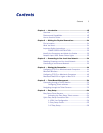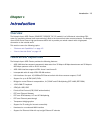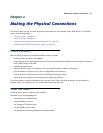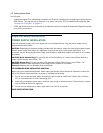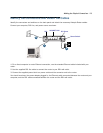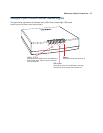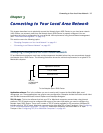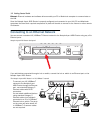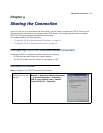
1-6 Getting Started Guide
•
NAT/NAPT, Multi-NAT, and DHCP (client, server, and relay) for security and convenience
•
DNS proxy
•
IP Multicast Forwarding, IGMP V1, V2
•
RIP1 and RIP2, static routes
•
IP QoS: TOS bit prioritization
•
VPN Pass-through for PPTP and IPSec
•
Built-in VPN gateway features offer support for up to 15 PPTP or IPSec VPN tunnels
•
IPSec implementation supports DES or 3DES encryption, MD5 or SHA1 encapsulation, and manual or IKE
keying
•
Built-in firewall protects LAN resources from Internet intruders
•
Backup Default Gateway feature with an external router enables high-availability solutions
•
Menu-driven or CLI interfaces via Telnet
•
Easy Setup with menu-driven interface
•
Tiered Access, 2 levels of configuration access
•
Configuration Management, up to 3 backup configurations
•
TFTP download/upload of new firmware and configuration files
•
System diagnostics and logs
•
SNMP V1 and V2 (read/write access)
•
Management utilities: ICMP ping, traceroute, Telnet client, and Syslog client
•
Status lights (LEDs) for easy monitoring and troubleshooting
•
Wall-mountable, Bookshelf (Side-stackable), or Desktop-stackable design for efficient space usage
How to Use this Guide
In addition to the documentation contained in the accompanying
Firmware User’s Guide
, this guide is designed
to get you up and running and connected to your local area network and the Internet. It is intended to be viewed
on-line, using the powerful features of the Adobe Acrobat Reader. The information display has been deliberately
designed to present the maximum information in the minimum space on your screen. You can keep this
document open while you perform any of the procedures described, and find useful information about the
procedure you are performing.
You can also print out all of the manual, or individual sections, if you prefer to work from hard copy rather than
on-line documentation. The pages are formatted to print on standard 8 1/2 by 11 inch paper. We recommend
that you print on 3-hole punched paper, so that you can put the pages in a binder for future reference.
This guide is organized into chapters describing the Netopia 4-port’s advanced features. You may want to read
each chapter’s introductory section to familiarize yourself with the various features available.
Use the guide’s table of contents and index to locate informational topics.





